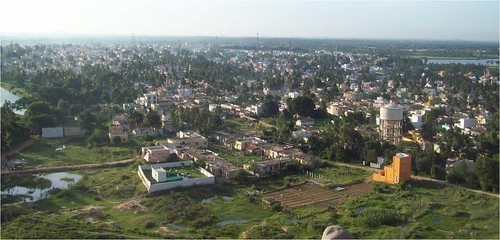/topics/drinking-and-other-domestic-uses
Drinking and other Domestic Uses
Assessing the land use change and its impact on water resources: A study on the Mula and Mutha rivers catchment area in Pune
Posted on 17 Feb, 2013 09:11 PMLand use changes hydrologic system and have potentially large impacts on water resources. An assessment in an area with seasonally limited water availability and which is subject to rapid socio- economic development and population growth will provide an exemplary view on the local impacts of major recent developments in India. In this backdrop this paper analyzes past land use changes between 1989 and 2009 and their impacts on the water balance in the Mula and Mutha Rivers catchment upstream of Pune. The aim of the paper is:
- assess the land use changes between 1989/1990 and 2009/2010
- analyze the impacts of these changes on the long-term water balance components in the Mula and Mutha Rivers catchment upstream of the city of Pune.
The role of sanitation in girl child education - A documentary film by HEEALS
Posted on 15 Feb, 2013 08:31 PM
The role of sanitation in girl child education - A documentary film by HEEALS
HEEALS is a vibrant civil society organization that aims to safeguard health, environment, education and livelihood to promote sustainable development of society. Through the medium of documentary film and art it is trying to create awareness among the masses about girl child education, menstrual hygiene, sanitation and safe drinking water and attempting to relate how girl child education directly suffers due to bad sanitation facilities, unsafe drinking water and lack of knowledge to obtain the same.
Influence of anthropogenic contamination on fluoride concentration in groundwater: A study of Mulbagal town, Kolar district, Karnataka
Posted on 15 Feb, 2013 04:53 PMGroundwater contamination is a serious, but relatively ignored issue in the country. This contamination occurs in either through geogenic or anthropogenic means. Fluoride contamination is one such example of geogenic contamination that is widely found in the Kolar district of Karnataka. However, the fluoride levels in the town of Mulbagal are lower than those in the surroundings. Earlier, a study was conducted on the impact of pit toilets on the groundwater in the area. The present paper investigates the presence of any link between these two phenomena.
A simple yet effective filtration and sterilization technique to obtain clean drinking water: Paper in the Current Science Journal
Posted on 06 Feb, 2013 07:40 PMThe paper ‘Simple filtration and low-temperature sterilization of drinking water’, describes how a straight forward, simple technique can provide clean drinking water that is pathogen free, using a simple sari!
Analysis of Delhi’s budgetary allocations for water and sanitation services in slum areas - Article in Economic and Political Weekly
Posted on 06 Feb, 2013 11:18 AMThis article in Economic and Political Weekly, by analysing various budget documents, attempts to capture the quantum of budgetary outlay for Water and Sanitation Services (WSS) in the slums of Bawana and Bhalaswa in Delhi. Further it captures various systemic weaknesses that impede the effective delivery of WSS in these two slum areas.
Punjab ranks highest in the country, in level of water pollution caused by industries - Roundup of the week’s news (January 28 - February 3, 2013)
Posted on 04 Feb, 2013 05:20 PMWater pollution by industries: Punjab ranks highest
Towards self-reliance and access to safe drinking water and secure sanitation in north Bihar: A report by Megh Pyne Abhiyan
Posted on 27 Jan, 2013 11:48 AMBattle for water: A video on the daily struggle of rural India for water
Posted on 22 Jan, 2013 08:47 PM






